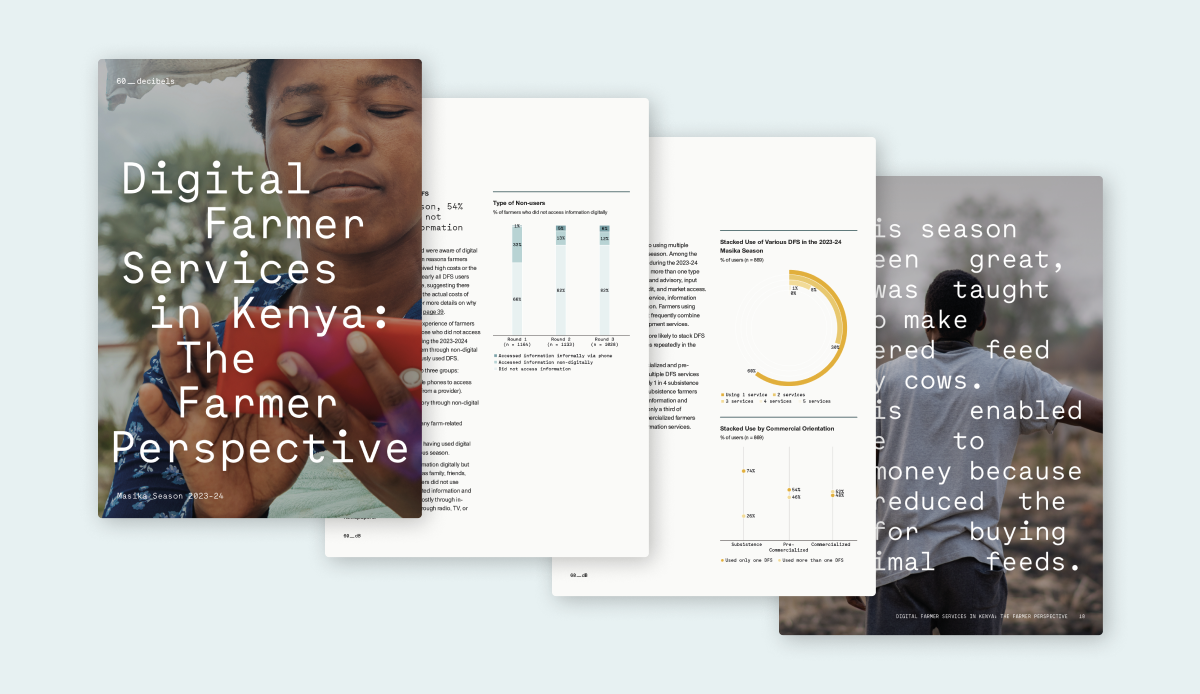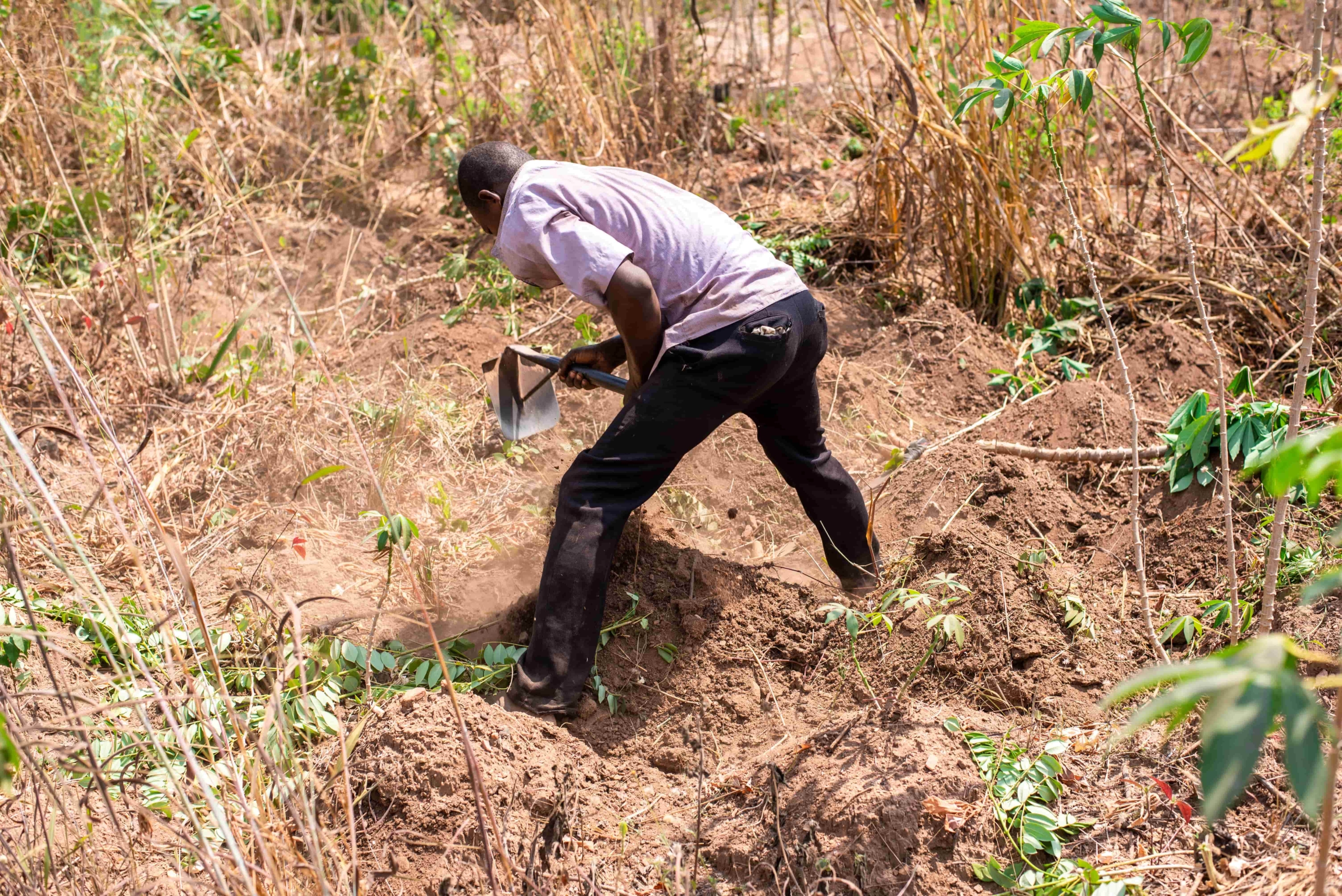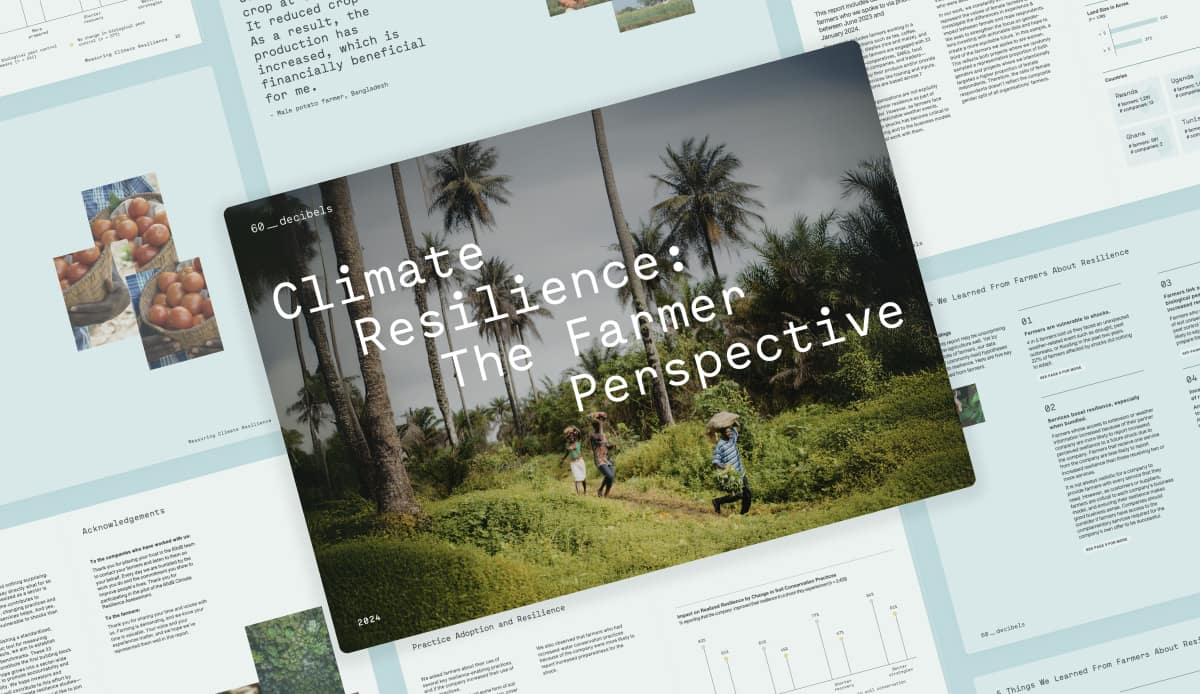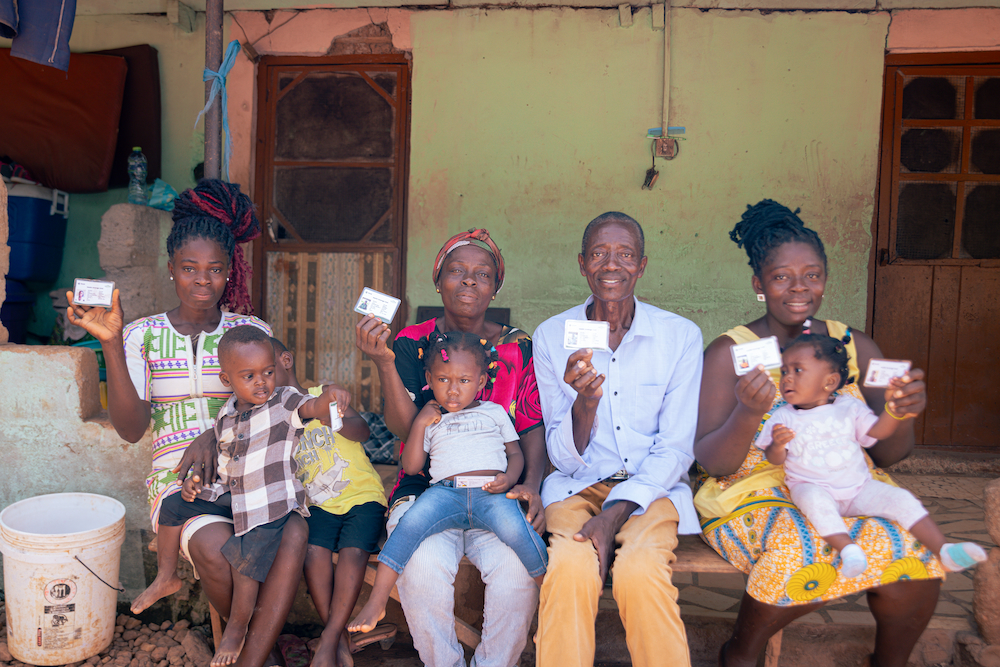

Farmer voices on soil health
For smallholder farmers in the global south, healthy soil is essential. As climate change accelerates, bringing erratic weather and resource scarcity, soil health has become a critical focus. Healthy soils store carbon, retain water, and provide the resilience needed to withstand droughts and floods, making them vital in the fight against climate impacts.
However, years of unsustainable farming and land degradation have depleted soils, reducing yields and threatening livelihoods. Restoring soil health is no longer optional—it’s essential for both productivity and climate resilience. While many agricultural programs now promote regenerative farming and soil health management, changing farmer behavior requires listening. Without understanding farmers’ perspectives and barriers—such as resource constraints, time limitations, or deeply rooted practices—these initiatives risk offering impractical solutions.
At 60 Decibels, we are listening to farmers about soil health management practices around the world. In Uganda, we interviewed more than 2,000 coffee producers and found that 71% practice intercropping, while less than half compost. In a separate study of 2,400 farmers in multiple countries and value chains, those increasing their use of soil conservation practices reported greater increases in their resilience to recent climate shocks. Across Acumen’s agriculture investments, we ask farmers about practices like soil testing and no-till agriculture to track impact and inform solutions.
In our latest study, we focused on one critical aspect of soil health: soil acidity in Kenya. With 63% of Kenya’s arable land affected by soil acidity, productivity and food security are at risk. Yet there’s little demand-side data on how farmers manage soil acidity, their awareness of solutions, and the barriers they face. Partnering with the Kenya Soil Health Development Program, we conducted lean interviews with farmers in Western and Central Kenya, capturing their awareness, behaviors, and beliefs about soil acidity and liming. By elevating farmer perspectives, we aim to co-create practical, effective solutions for a healthier future.
Top Insights
Few farmers receive formal soil health training, and even fewer apply it
1 in 5 farmers have received some kind of training or advisory related to soil health, with commercialized farmers (24%) more likely to access training than subsistence farmers (11%). However, among those trained, only 10% fully apply what they’ve learned, and 38% use less than half of the information on their farms.
Soil testing is rare among farmers, limiting their ability to address specific soil needs
Only 7% of farmers tested their soil in the past year, primarily with expert support. The main reasons for not testing were limited access to local services, unfamiliarity with soil testing, and high costs, with fewer than 10% expressing distrust in the service or viewing the tests as unhelpful.
Just 11% of the farmers we spoke to report using lime this year
Lime application is more common among commercialized farmers (20%) than subsistence farmers (7%) and among male (14%) compared to female farmers (9%).
Low lime use is driven by lack of awareness
Fewer than 10% of farmers in our sample report understanding soil acidity and pH, and nearly half don’t know what lime is. Additionally, the main reason farmers aren’t using lime is due to unfamiliarity with it or a lack of information on how to apply it effectively. Awareness of lime is highest among commercialized farmers and male farmers.
For farmers aware of lime, access is still a significant barrier
Access to lime remains a major barrier for farmers, with 2 in 5 reporting difficulties in obtaining it and nearly half indicating challenges in accessing the equipment needed for application. Female farmers experience even greater difficulty in securing both lime and the necessary application tools.



